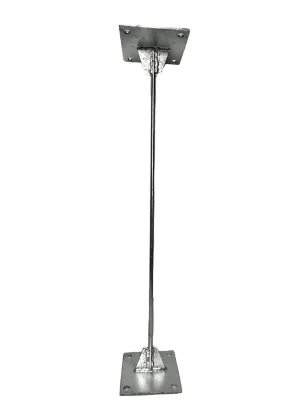loading...
- No. 9, Xingyuan South Street, Dongwaihuan Road, Zaoqiang County, Hengshui, Hebei, China
- admin@zjcomposites.com
- +86 15097380338
- Welcome to visit our website!
Composite Decking Solutions for Lightweight and Durable Construction Panels
Understanding FRP Deck Panels A Comprehensive Overview
Fiber Reinforced Polymer (FRP) deck panels have emerged as a revolutionary solution in the construction industry, offering a range of benefits that traditional materials often fail to provide. These panels, made from a composite of fibers and polymer resins, have found their place in various applications, particularly in building structures that require durability, strength, and resistance to harsh environmental conditions.
What Are FRP Deck Panels?
FRP deck panels are thin, lightweight sheets constructed from a combination of glass or carbon fibers and resin. The manufacturing process involves molding the fibers into a desired shape and saturating them with resin, which is then cured to form a solid, strong material. This unique composition gives FRP panels superior properties that make them an attractive option for many construction projects.
Benefits of FRP Deck Panels
1. Lightweight Yet Strong One of the most significant advantages of FRP deck panels is their high strength-to-weight ratio. This characteristic allows for easier handling and installation. Despite being lightweight, these panels provide excellent structural support, making them ideal for a variety of applications.
2. Corrosion Resistance FRP deck panels are inherently resistant to corrosion, which is a major concern in many construction environments. Exposure to water, chemicals, and harsh weather conditions can degrade traditional materials over time. However, FRP materials resist these effects, ensuring longevity and reducing maintenance costs.
3. Thermal Insulation The insulation properties of FRP panels are superior to those of concrete or steel. They can help maintain consistent temperatures within structures, making them energy-efficient by reducing heating and cooling costs.
4. Design Flexibility FRP panels can be molded into different shapes and sizes, providing architects and engineers with the flexibility to design unique structures. This capability is especially beneficial in modern architectural designs that often call for unconventional shapes.
frp deck panels

5. Environmental Compatibility The production of FRP panels can be more environmentally friendly compared to traditional building materials. Many manufacturers have adopted sustainable practices and use recyclable materials in their products, contributing to greener building practices.
Applications of FRP Deck Panels
FRP deck panels have a wide range of applications across various sectors. In the construction of bridges, their lightweight nature facilitates easier transport and installation, while their corrosion resistance makes them suitable for use in marine environments. Additionally, FRP panels are increasingly employed in flooring systems for industrial facilities, where chemical exposure is a common issue.
In the aerospace and automotive industries, the need for weight reduction while maintaining strength has fueled the adoption of FRP materials. Manufacturers are continuously exploring how FRP can enhance performance and efficiency in these high-tech applications.
Challenges and Considerations
While FRP deck panels offer numerous advantages, there are challenges to consider. The initial cost of FRP materials can be higher than traditional options, which may deter some builders. Additionally, skilled installation is essential to maximize their benefits, and not all construction teams may have the necessary training in working with FRP materials.
Conclusion
As the construction industry continues to evolve, FRP deck panels stand out as a versatile and innovative building solution. Their combination of strength, lightweight, and resistance to environmental degradation makes them an ideal choice for a wide array of applications. As technology advances and manufacturing processes improve, it is likely that the use of FRP panels will become even more prevalent, paving the way for sustainable and efficient building practices in the future.
-
The Rise of FRP Profiles: Strong, Lightweight, and Built to LastNewsJul.14,2025
-
SMC Panel Tanks: A Modern Water Storage Solution for All EnvironmentsNewsJul.14,2025
-
GRP Grating: A Modern Solution for Safe and Durable Access SystemsNewsJul.14,2025
-
Galvanized Steel Water Tanks: Durable, Reliable, and Ready for UseNewsJul.14,2025
-
FRP Mini Mesh Grating: The Safer, Smarter Flooring SolutionNewsJul.14,2025
-
Exploring FRP Vessels: Durable Solutions for Modern Fluid HandlingNewsJul.14,2025
-
GRP Structures: The Future of Lightweight, High-Performance EngineeringNewsJun.20,2025
